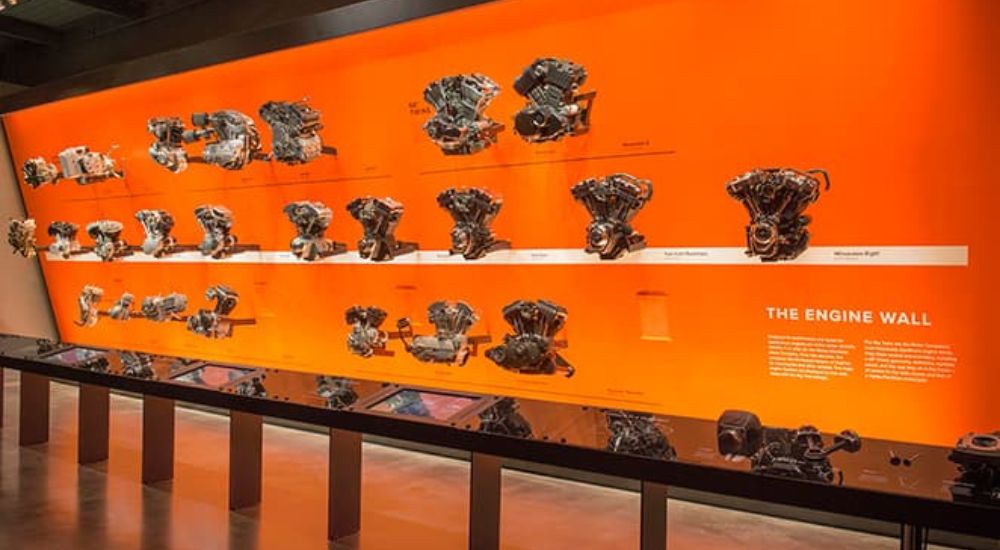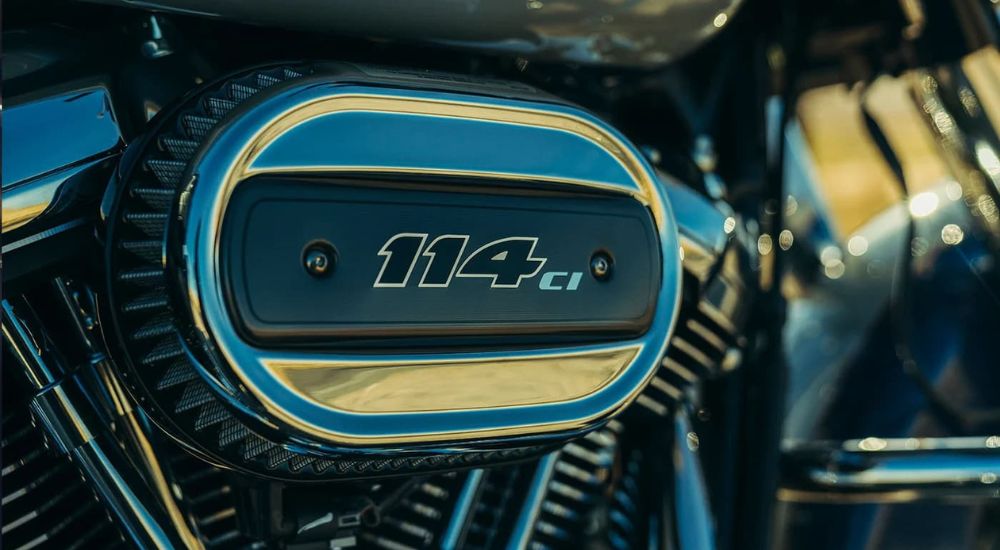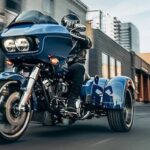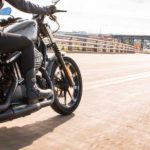How would you describe the sound coming from a 2023 Harley-Davidson Street Glide Special? It isn’t a hum, purr, or whistle but a rumble so iconic that Harley-Davidson once tried to have the sound trademarked. Harley-Davidson eventually withdrew the petition as rivals filed lawsuits in objection, arguing the impossibility of trademarking a sound produced by an engine layout that so many utilized. However, even without approval, the rumble remains the unofficial trademark of the entire Harley-Davidson fleet.
But what’s behind the iconic rumble? Most notably, how has Harley-Davidson managed to introduce only a handful of new engines over the last century? Harley-Davidson fans may bleed orange for the beloved American brand, but there’s an even deeper bond in the legacy behind the heartbeat that’s defined the Harley-Davidson lineup since the early 1900s.
Breaking Tradition: The Ingenuity Behind the Rumble
The distinct rumble of a Harley-Davidson engine is described as a chant of “potato, potato, potato” rather than a smooth hum or purr. It has less to do with the potatoes we eat, and everything to do with the word itself which, when repeated, is the closest interpretation to what our ears pick up when a Harley-Davidson is near. But why is this sound so closely associated with Harley-Davidson in particular, and not motorcycles as a whole?
The motorcycle industry is laden with two-cylinder engines, but they don’t produce the same rumble as a Harley-Davidson because of a distinct design difference. A standard two-cylinder engine relies on two pins to connect the pistons and connecting rods. This layout positions the spark plugs 180 degrees from one another, which means the pistons fire on every other revolution. As a result, the compressed gasses leave the cylinder through the exhaust valve and produce an even, balanced sound.
While this smooth sound is music to many ears, it will never match the rumble of a Harley-Davidson motorcycle. It’s a rumble born of necessity after Harley-Davidson set out to design a V-Twin engine that was easy and cost-effective to manufacture. This meant simplifying the layout, so much so that Harley-Davidson dropped the second pin from the design. Instead, a Harley-Davidson V-Twin engine relies on a single pin to connect the pistons, which means the spark plugs aren’t positioned 180 degrees from one another but at 45 degrees.
The more acute angle of the spark plugs alters the interval at which the pistons fire. For example, instead of firing on every other revolution like a traditional two-cylinder engine, there’s a distinct delay that creates an asymmetrical pattern. The first cylinder fires, but the second cylinder can’t fire until the crankshaft makes a 315-degree rotation, which is followed by a 405-degree gap before the cycle repeats. This pattern produces the rumble synonymous with nearly every Harley-Davidson road warrior ever made.
The Engine That Started It All: The F-Head
Beyond the iconic rumble, one of the most interesting aspects of Harley-Davidson history is its engine design over the last century and its success in building its reputation around its heavy-hitting V-Twins. This legacy began in the 1910s when Harley-Davidson debuted the F-Head, which set the stage for its more famous successors like the Flathead, Knucklehead, and Panhead. Today, models like the 2023 Street Glide Special see the latest iteration of Harley-Davidson ingenuity with the Wafflehead, officially known as the Milwaukee-Eight.
The F-Head wasn’t born of necessity but of passion, as Arthur, Walter, and William Davidson shared their fondness for tinkering and bicycles with a neighborhood friend named William Harley. The young men started tinkering, intending to build a motorized bicycle. Little did they realize that their design would lead to one of the most beloved brands in the American motorcycle industry. “The business had its origin, not through any particular idea on the part of the starters of it that there was a commercial future for the motorcycle,” Walter Davidson later said in 1919, “but through the desire to make a motorcycle for our personal use.”
The Harley-Davidson prototype was ready by 1903 and was powered by an F-Head engine. The 440 cc engine was an inlet-over-exhaust design, where the inlet valve was positioned at the top of the cylinder head and the spark plug at the top of the combustion chamber. The inlet’s unique position optimized the distribution of the fuel and air mixture into the combustion chamber, enhancing the prototype’s efficiency. Likewise, the spark plug’s position ensured it could readily ignite the mixture when compressed, giving the prototype adequate and reliable power.
Doubling the Power With a Second Cylinder
Like so many of us today, William Harley’s insatiable need for speed prompted him to look for ways to increase the power output of the F-Head engine. Harley added a second cylinder to the layout, hoping to double the engine’s output by positioning the cylinders in a V formation. As the first official V-Twin in the Harley-Davidson lineup, the engine had its advantages, like maintaining the optimal temperature and protecting the spark plugs. However, it also had its faults. The design dramatically limited the F-Head’s success at revving at higher speeds because it relied on a vacuum to open the valves. This issue led William Harley back to the drawing board, where he replaced the inlet valves with a rocker and external push rod that guaranteed the 811cc F-Head V-Twin could rev at higher speeds without a hitch.
The F-Head engine laid the foundation for the Harley-Davidson brand and the future of Big Twin engines, solidifying the company’s ingenuity and success at building two-wheeled powerhouses. In fact, no one appreciated that ingenuity more than American troops fighting in World War I. These soldiers relied on Harley-Davidson motorcycles powered by F-Head engines for reconnaissance and communication, two vital components of winning the war.
The Line of Succession
Although the F-Head engine was a significant milestone for Harley-Davidson, the manufacturer couldn’t afford to rest on its laurels as rivals threatened its status as America’s leading motorcycle brand. By the late 1920s, Harley-Davidson debuted the successor to the F-Head: the Flathead, a side-valve engine with quad cams. The Flathead, albeit reliable and incredibly successful as a rival to the Indian Scout, was eventually overshadowed by the Knucklehead.
Named for the design of its head resembling the knuckles on a closed fist, the Knucklehead debuted in the late 1930s as the first engine in Harley-Davidson history to feature overhead valves. Harley-Davidson also introduced an improved oil lubrication system that resolved a common issue with the Flathead. However, the Knucklehead faded into oblivion in the late 1940s when Harley-Davidson introduced the Panhead.
The postwar boom in America ignited a frenzy as people flocked to Harley-Davidson dealers to chase the horizon and get an authentic taste of freedom in the saddle. The Panhead engine powered most of these road hogs, offering higher speeds and more power than what was imaginable with the Knucklehead. Moreover, the Panhead was far more attractive with its pan-like rocker covers, aluminum heads, and hydraulic valve lifters.
As the Panhead introduced riders to electric starters on models like the 1965 Electra Glide, Harley-Davidson introduced the next successor–the Shovelhead–in 1966, followed by the Evolution in 1984, the Fathead in 1999, and the Wafflehead in 2017. Where the Shovelhead offered more power to accommodate the growing size of Harley-Davidson bikes, the Evolution exceeded that power and was legions more advanced. The Fathead or Twin Cam continued in the same fashion, offering more horsepower and torque that ultimately paved the way for the Milwaukee-Eight “Wafflehead” in 2017.
The Rumble Roars On
Today, models like the 2023 Harley-Davidson Street Glide Special remain true to their roots, delivering the iconic roar forever tied to the Harley-Davidson name. For decades, the roar was a product of engines like the Fathead, Shovelhead, Panhead, and Knucklehead, but these newest models draw their breath and heartbeat from the Milwaukee-Eight Wafflehead. As the next succession in Big Twin history, the Wafflehead leaves no question that a Harley-Davidson is near as it roars to life with its instantly recognizable “potato potato” chant.






